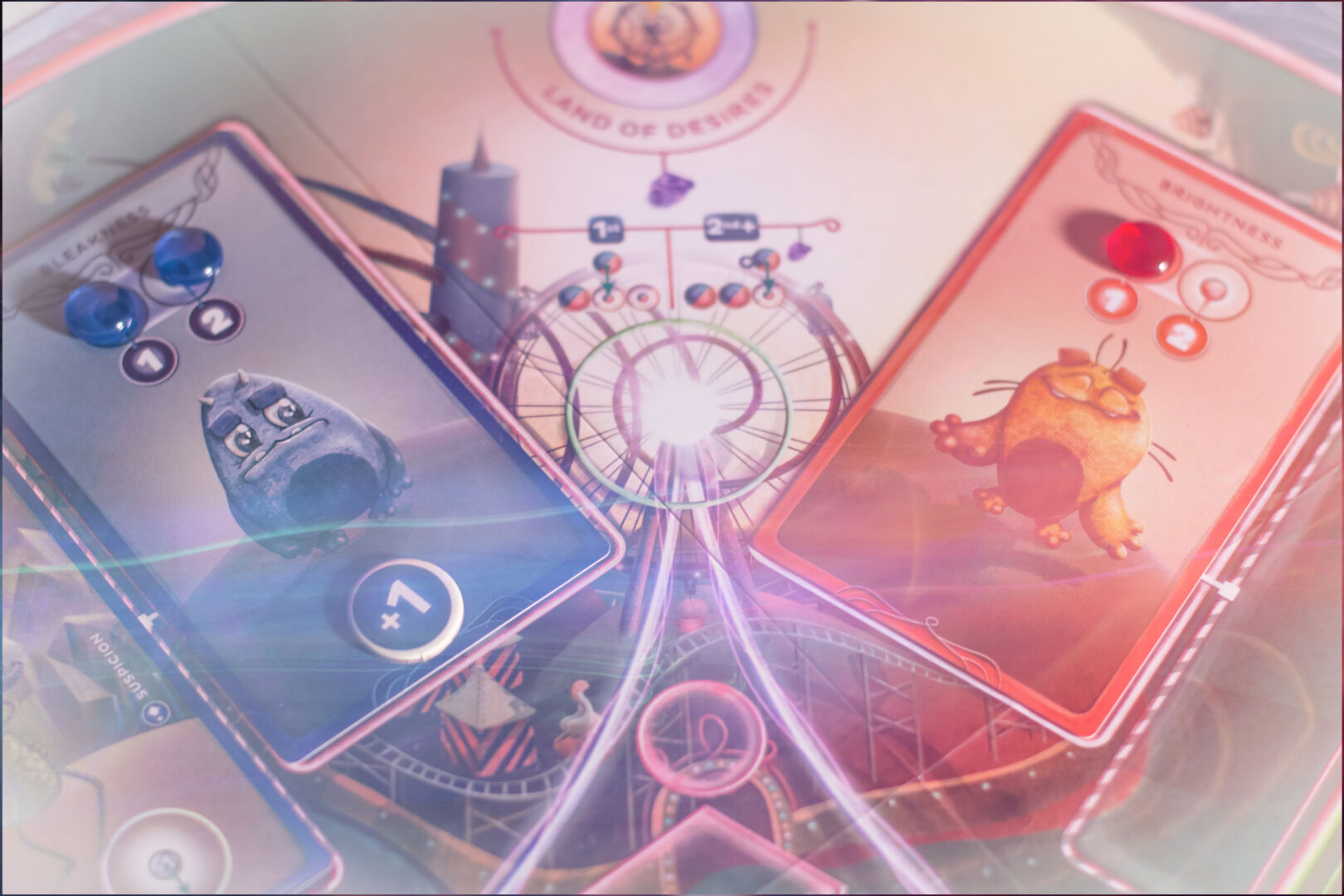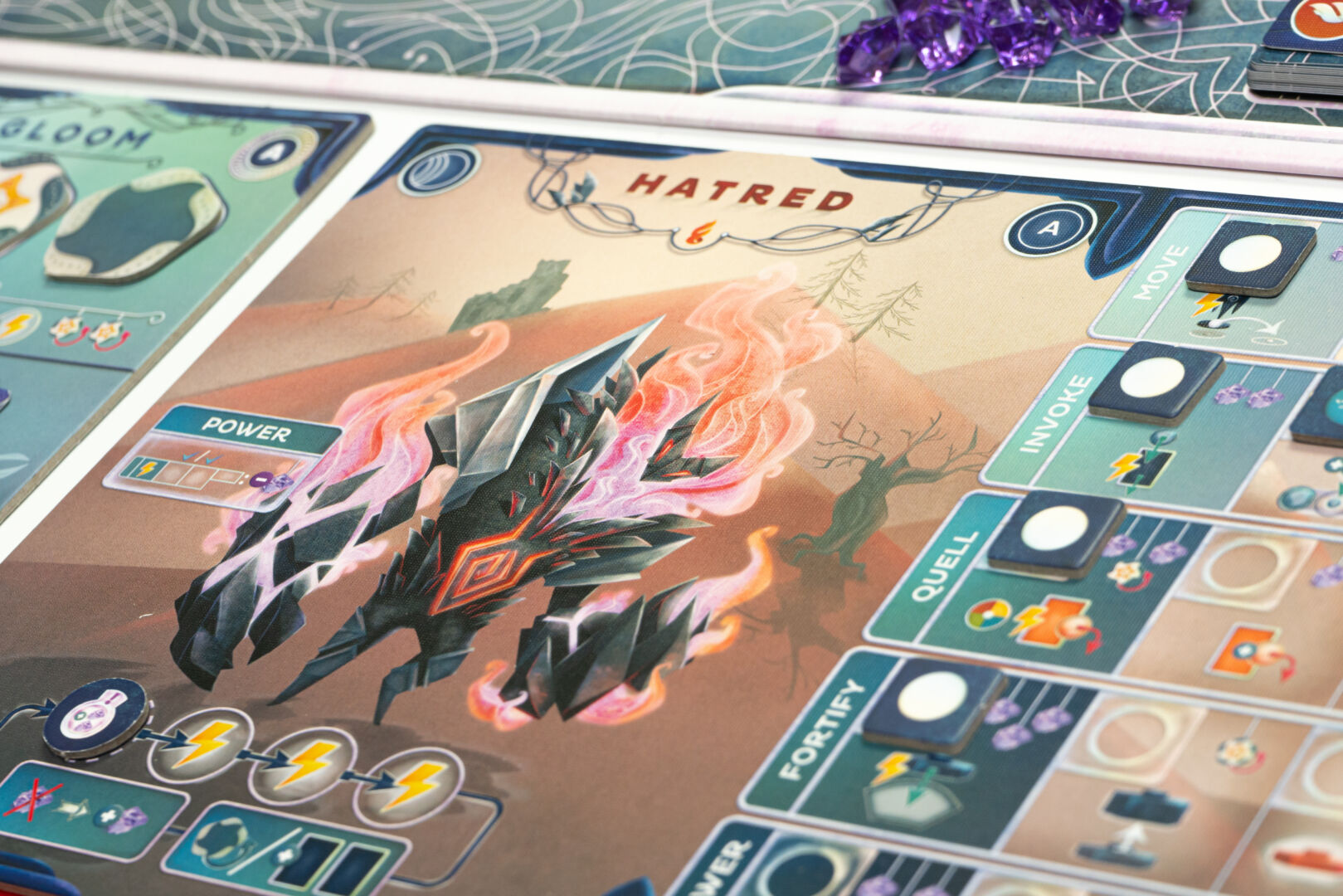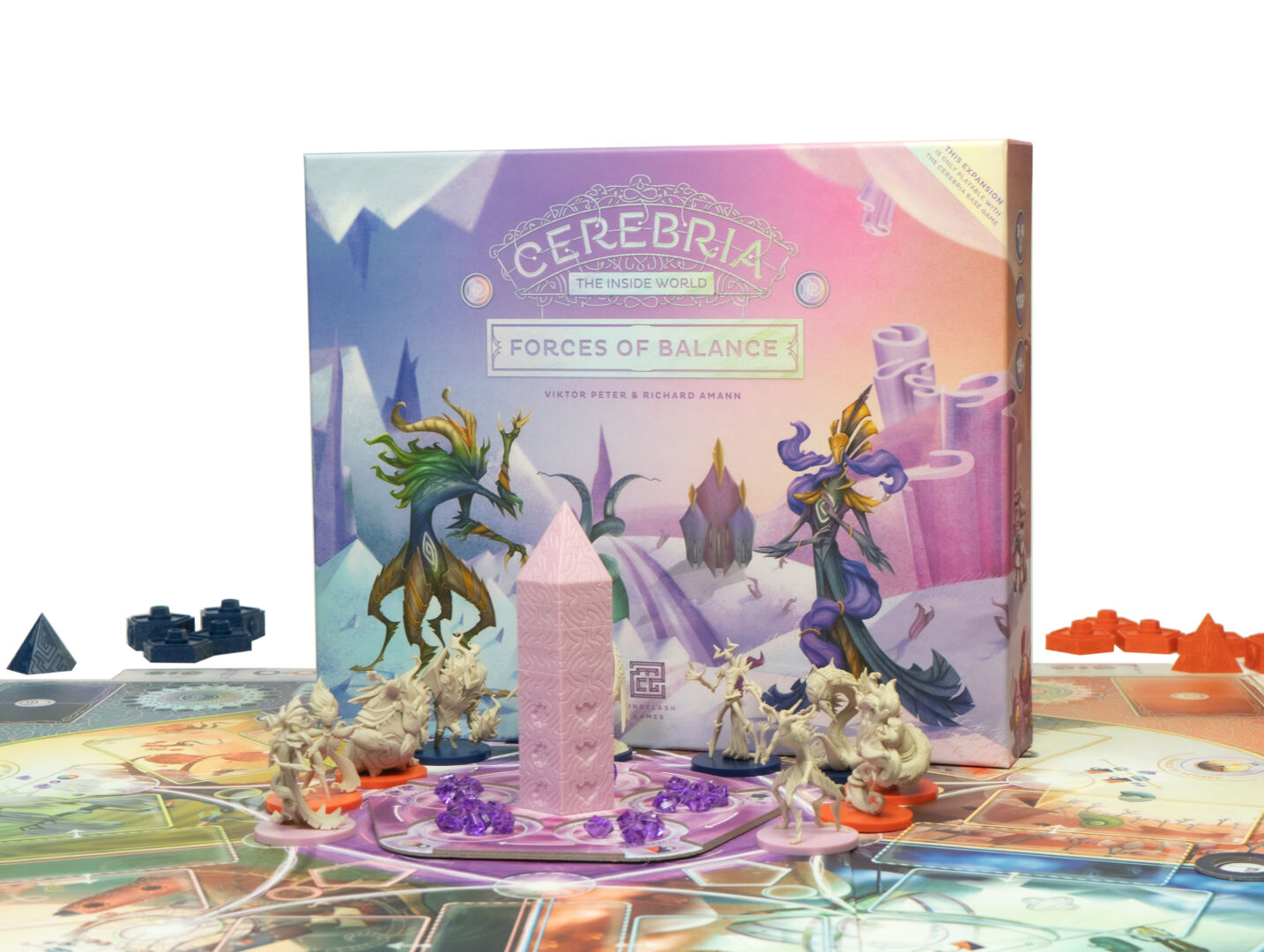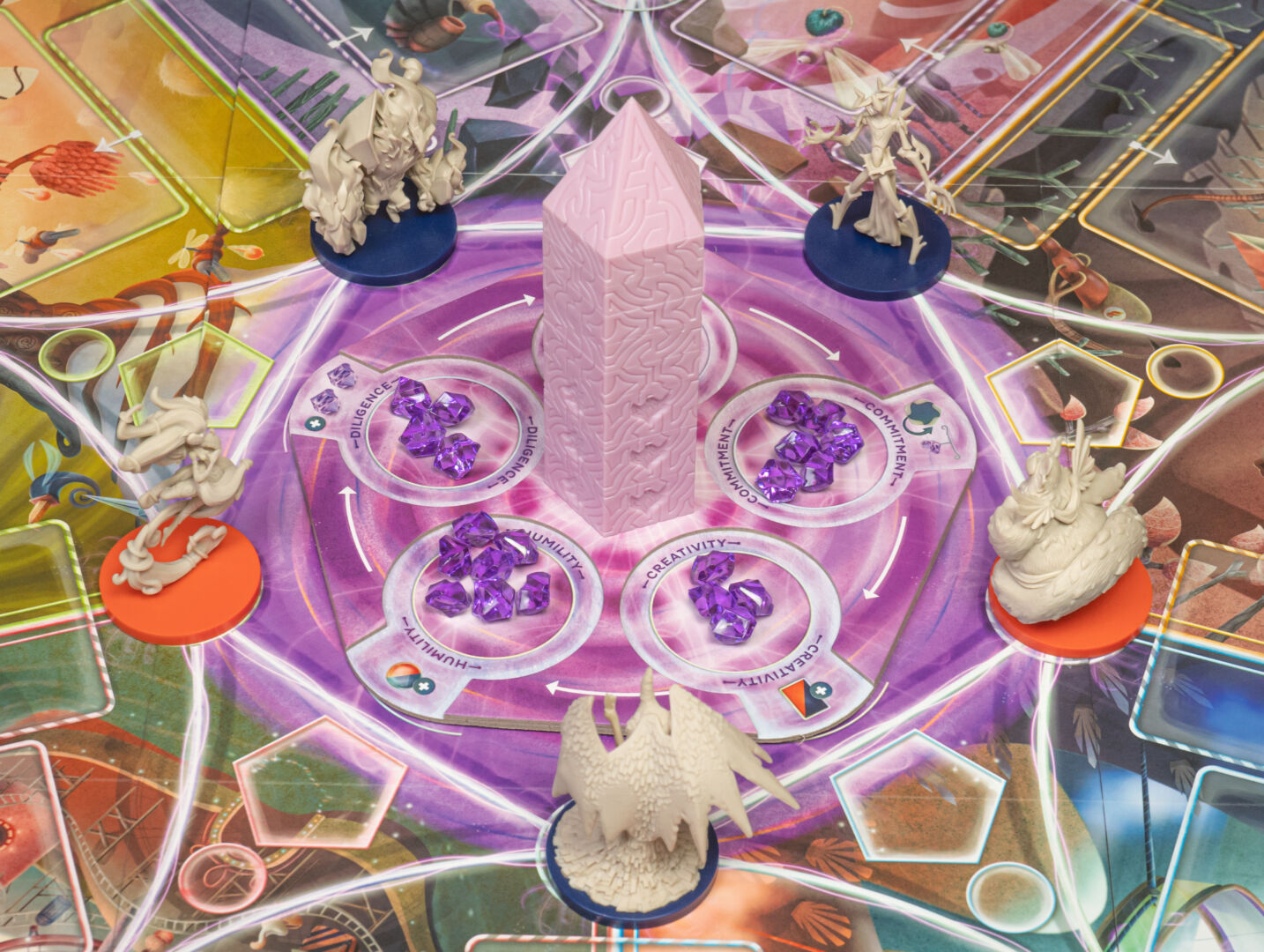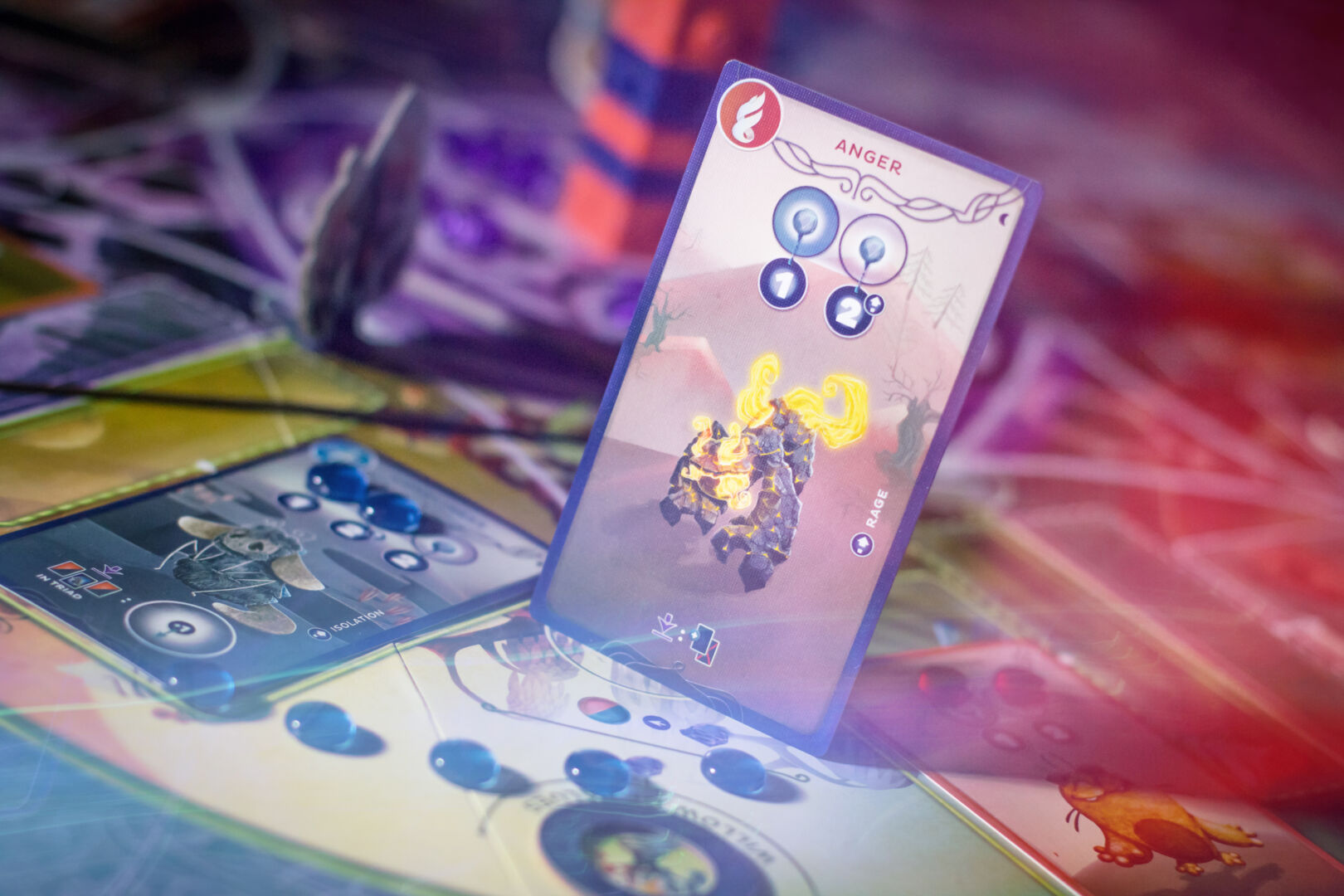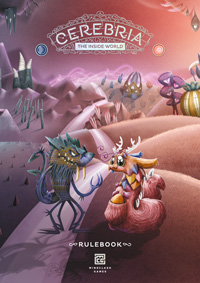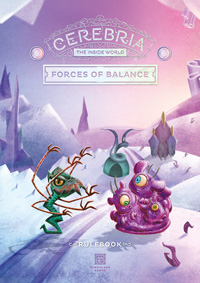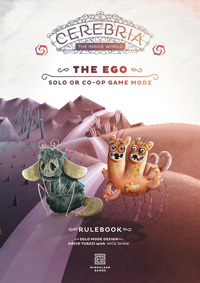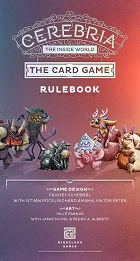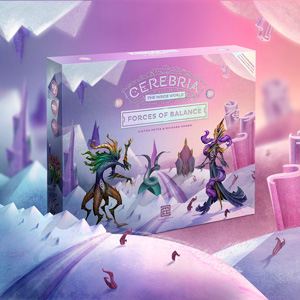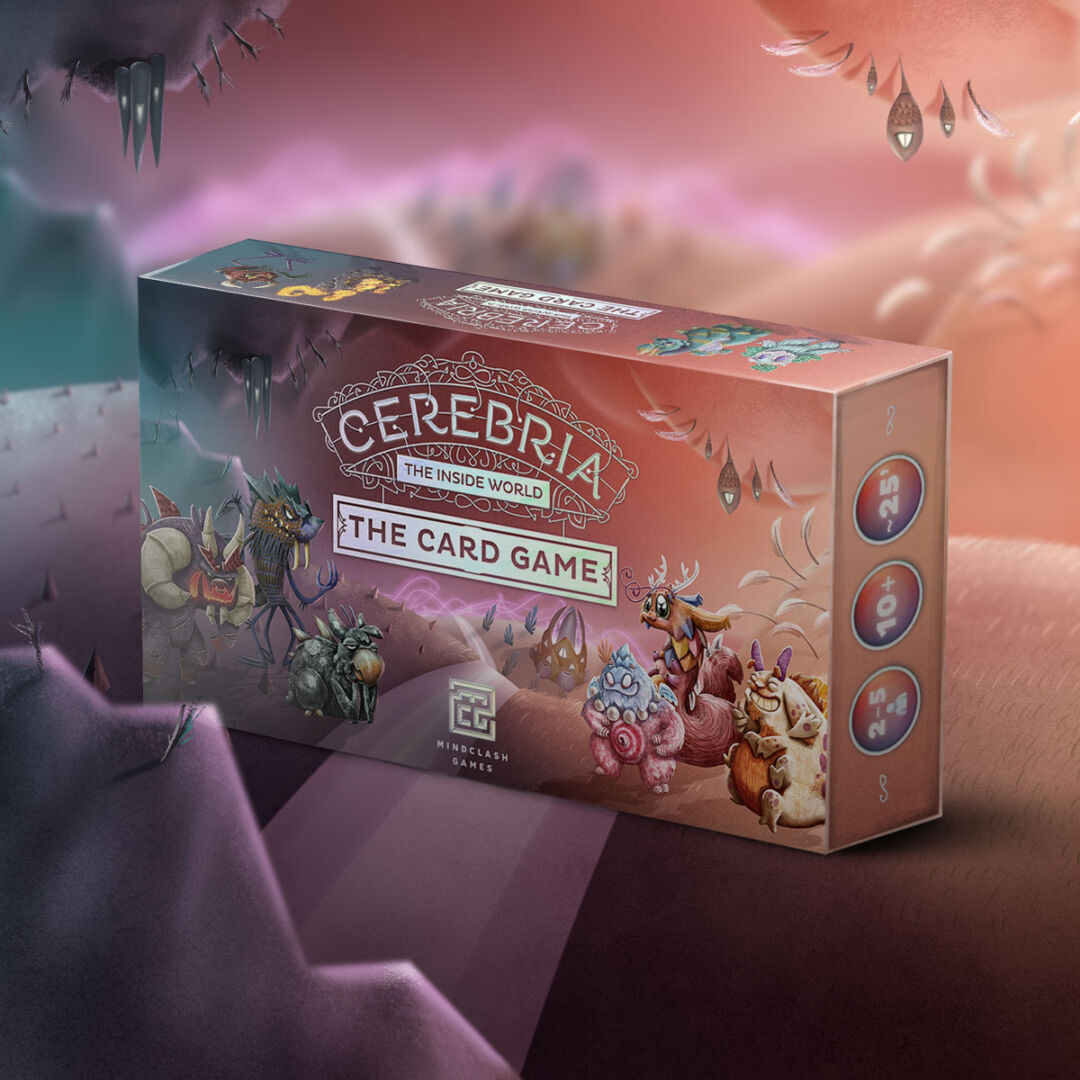Cerebria
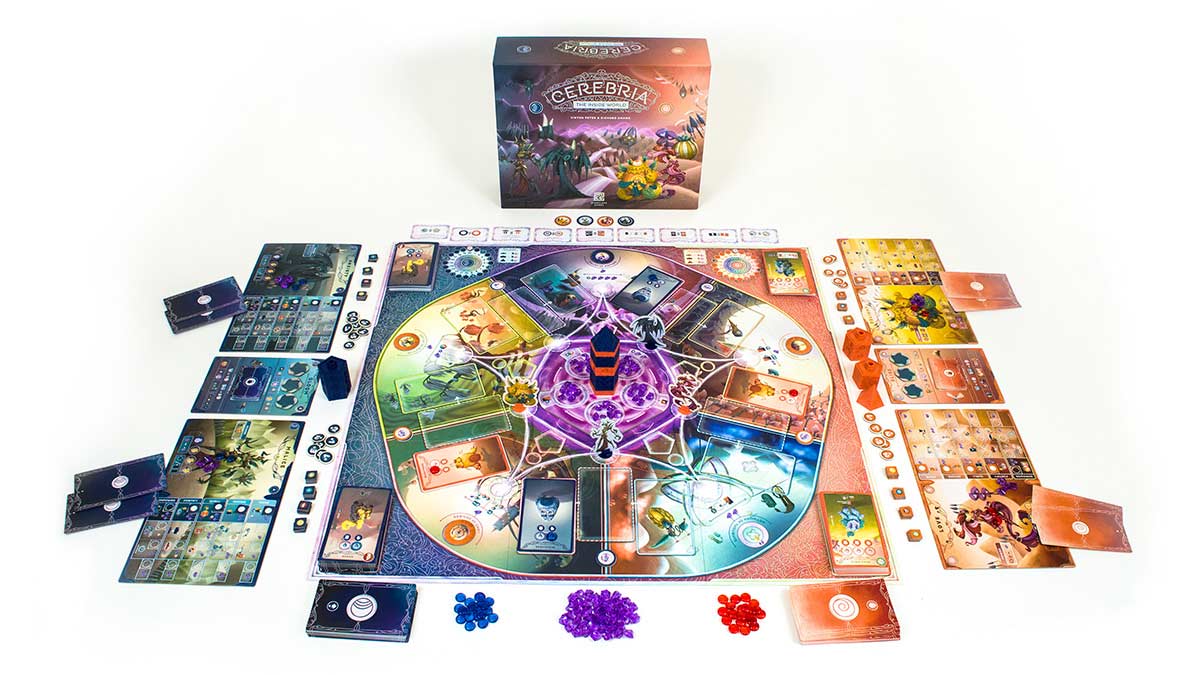
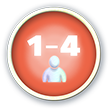


Cerebria – The Inside World is a wondrous and quirky world where players embody the Spirits of Bliss or Gloom, the two opposing sides of human nature. Competing to shape Cerebria’s Identity, Spirits spread their influence on the main board by invoking Emotion cards with various intensities and abilities; placing Fortresses to strengthen their presence in the Realms; unlocking upgrades to their Actions; absorbing Willpower from the ever-rotating Origin; and attempting to trigger Revelations at just the right time to score the completed objectives.
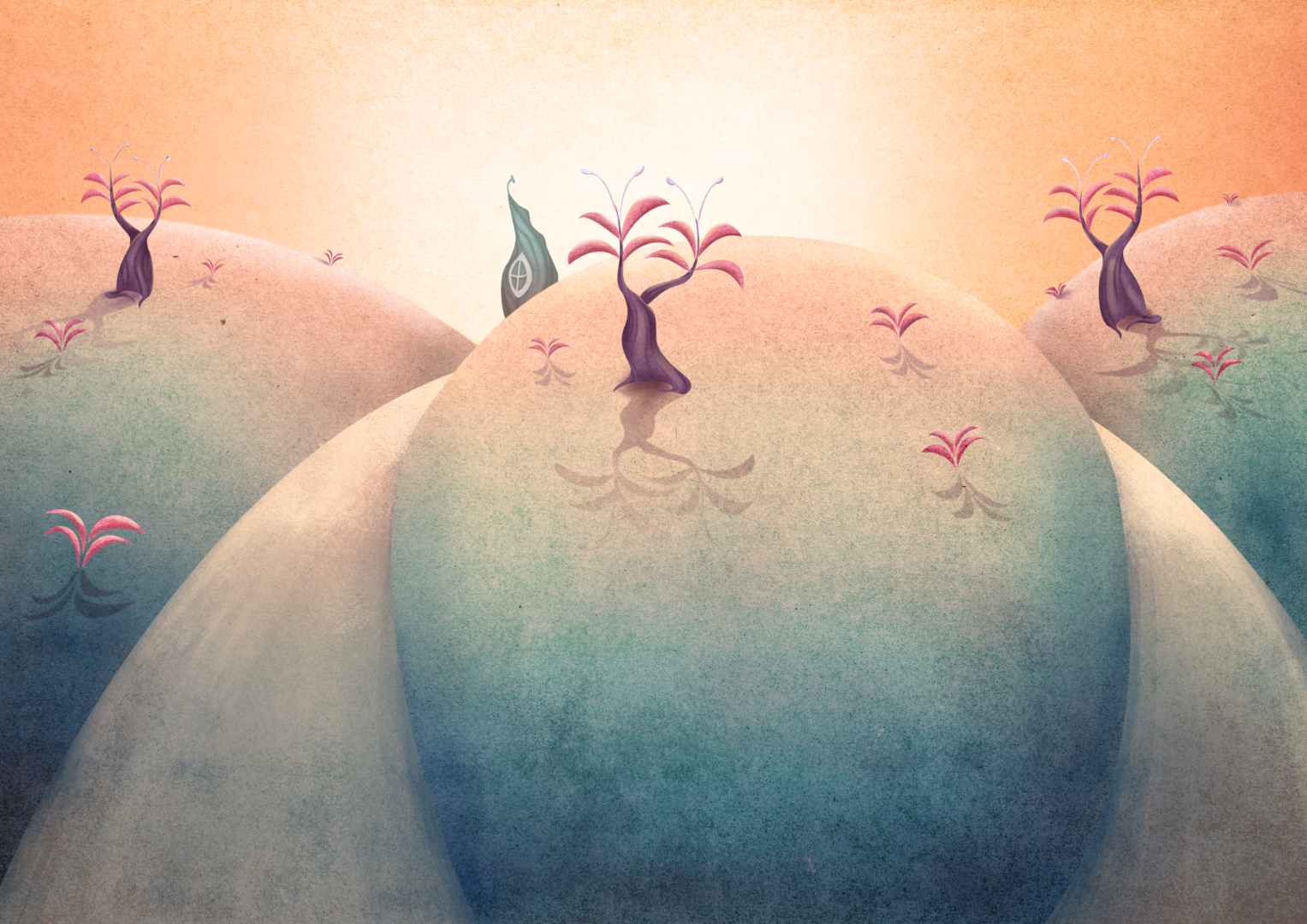
Mechanisms
MULTIPLE ASPECTS OF AREA CONTROL
Cerebria features seven different aspects of area control. The game is objective-driven; while each of these control aspects gives benefits, their importance in scoring will change dynamically based on the Aspiration (objective) cards. Each side has its own secret Aspiration but there is also a common one, openly contested by both sides. By gaining resources from the Origin, players will eventually trigger Revelations; this is when the Aspiration cards are evaluated, and a Bliss or Gloom Fragment is added to the Identity based on the result.
BUILD YOUR OWN DECK OF EMOTION CARDS
Cerebria’s gameplay revolves around the Emotions, the Inside World’s inhabitants. They all have unique, thematic special abilities and an Intensity value that depends on the amount of Essence them. The more intense they are, the more effectively they can influence Cerebria’s Realms and Frontiers. With enough Essence, they can even be evolved to their stronger form!
There are dozens of different Emotions available, enough to build and customize your own Emotion deck before each game to suit your play style.
ACTION POINT SYSTEM WITH RESOURCE MANAGEMENT
On their turn, players can take up to three Actions with their Spirits. Each of these actions cost one action point and some amount of Willpower. Willpower can be gained in several ways but mainly from the Spheres of the ever-rotating Origin in the middle of the board. Taking Willpower from the Spheres lets players have control over mid-game scoring; managing Willpower, then, is critical to the Spirits’ success.
Further powerful Actions are only available if the players have Ambition, the rare resource in their possession.
DEFEAT THE EGO, CEREBRIA’S SOLO OPPONENT
Challenge the Ego for a game of Cerebria by yourself or cooperatively with another player!The Ego, an automated opponent, takes control of the opposing side using the powers of Defiance, Judgement, and Endeavor against you. Its variable difficulty levels, highly human-like behaviour, and intricate-yet-intuitive rules guarantee a balanced and challenging experience.
How to Play
Gallery
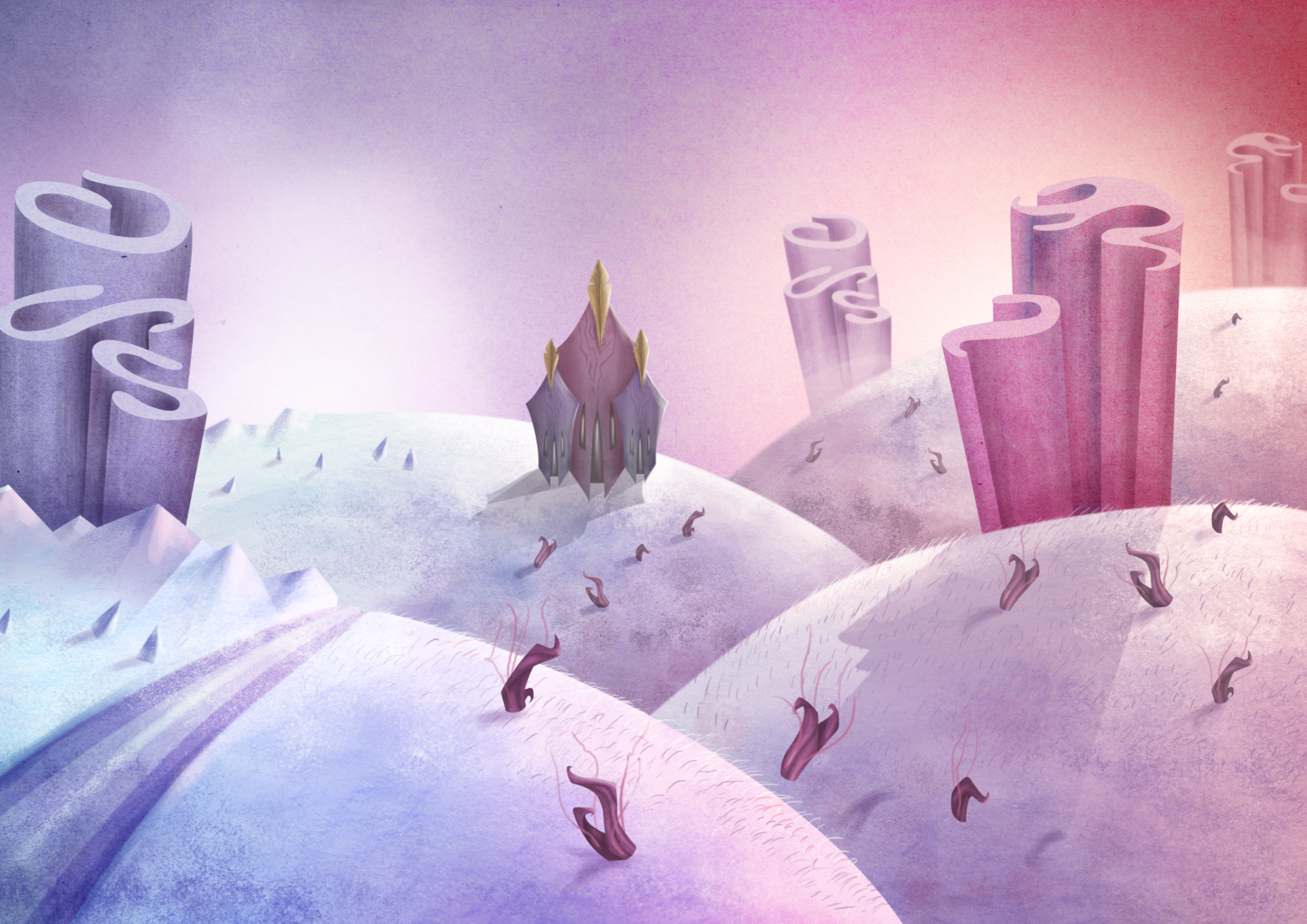
Expansions and other games
Forces of Balance
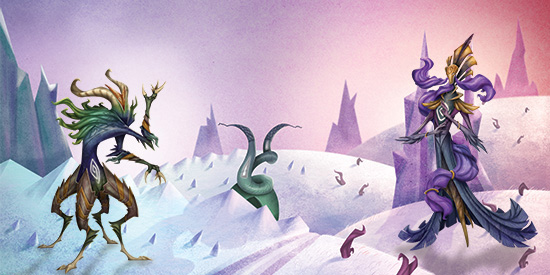
With Forces of Balance, Cerebria can be played with up to 6 players at once, and it also brings a new 3-player game mode to the table.
The expansion doesn’t affect the usual gameplay for players with Bliss or Gloom Spirits, but it introduces a new side, Balance, with a whole new playstyle.
Balance players have their own method to gather Identity Fragments during the game. They do not compete for the Common Aspiration; instead, they have special Hidden Aspirations with two different conditions. The first is similar to the normal Aspirations with a twist: Balance only wins if Bliss and Gloom are tied in that condition during the Revelation!
The other condition is unique to Balance, and winning one is worth a Minor Fragment, while winning both is worth a Major Fragment. Just like Bliss and Gloom, Balance wins by having the most points at the end of the game from Identity Fragments and the Wheel of Intentions.
Balance has its own set of Emotions, each of which can be aligned with one side or the other, but they can also benefit from Bliss and Gloom Emotions on the board. Overall, the highly asymmetric Balance faction brings a fresh and intriguing way to play Cerebria, with increased player interaction, temporary alliances between players, and a lot of tense moments.
The Card Game

Cerebria – The Card Game is a turn-based card game, where players build their Mindsets, filling it up with Bliss and Gloom Emotions. Players fill their hand with Emotion cards from the Impulse, a dynamically changing pool of available Emotion cards. Whenever the Impulse is emptied of Emotions, a Revelation takes place; this is when each player’s Mindset is scored, granting Bliss or Gloom Identity Fragments. The goal of the game is to collect enough Fragments to fully develop the Identity.
Players can gain Fragments by invoking Emotions into their Mindset. However, these Fragments can be spent on the effect of the Emotions’ Abilities, so it is up to the players to decide whether they hold on to their victory points or spend some of them to be more efficient. Emotion Ability effects can interact with other Mindsets, other players’ hands and the Impulse; but they can be canceled by discarding Emotions of the matching type.
The game ends if one of the players manages to build a fully single-minded (collecting twelve or more of the same type of Fragment) or a balanced Identity (collecting seven or more of both Fragment types each).


